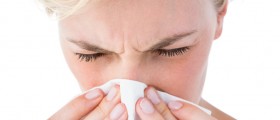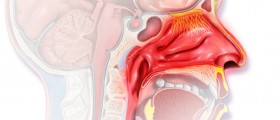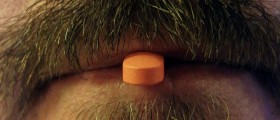
Any kind of allergy is a result of improper functioning of the immune system. People may develop an allergy to many things such as food, medications or certain environmental substances such as pollen and dust. During the first contact with an allergen a person develops sensitivity and the allergic reaction develops after every additional exposure to a specific allergen.
Dust allergy is caused by dust mites. Dust mites are normally found in house dust. They may, in predisposed people cause the onset of allergy. These particular microorganisms flourish in humid and warm environment and can be found almost everywhere. Dust allergy is not considered a serious medical condition. However, its symptoms may be rather bothersome and exhausting. It is estimated that approximately 10% of the population is allergic to dust mites.
Dust Allergy: Symptoms
The symptoms of dust allergy develop every time a person is exposed to dust. They may even intensify during certain activities such as cleaning the house. This type of allergy typically features with runny nose, repeated sneezing, watery eyes, inflammation of the nasal airways and persistent stuffy nose. Some patients suffering from dust allergy may experience symptoms such as labored breathing. There may also be inflammation of the airway.
Dust Allergy: Treatment
The best way to prevent the onset of the symptoms is to minimize the contact with dust. Still, this is simply not possible all the time so people allergic to dust will eventually come in contact with the fatal allergen and develop specific symptoms.
One may manage dust allergy by regular cleaning the house. This way the environment will not contain too much dust and it will not cause excessive irritation. The house is supposed to be vacuumed frequently and all the bed covers, pillow cases and blankets should be washed as frequently as possible. The humidity of the air ought to be as low as possible.
Decongestant and antihistamines are highly effective medications prescribed to people suffering from a dust allergy. Antihistamines fight against inflammation and all the accompanying symptoms while decongestants reduce nasal congestion. Antihistamines are taken orally in a liquid from or as capsules. Decongestants are sprayed directly into the nasal cavity. It is essential to consult a well experienced doctor prior taking any of the previously mentioned medications. Inflammation caused by dust allergy can be also treated with steroid medications which are available in oral or nasal form. Administration of steroid medications requires permanent monitoring since they have many side effects.
Immunotherapy is another treatment modality for dust allergy. It is recommended in people who are suffering from allergic asthma and whose symptoms simply cannot be controlled with medications. This treatment modality alleviated the symptoms and may even prevent recurrence of the airway inflammation. Immunotherapy is in a form of allergic shots. It is highly effective in case of allergy to mold pollen and dust mite. The treatment includes injection of small doses of particular allergen under the skin. The body eventually becomes accustomed to the allergen and gradually builds up immunity to the particular substance. Patients become quite resistant to particular allergens and the symptoms tend to be less intensive once a person gets in contact with the allergen.













_f_280x120.jpg)



Your thoughts on this
Loading...